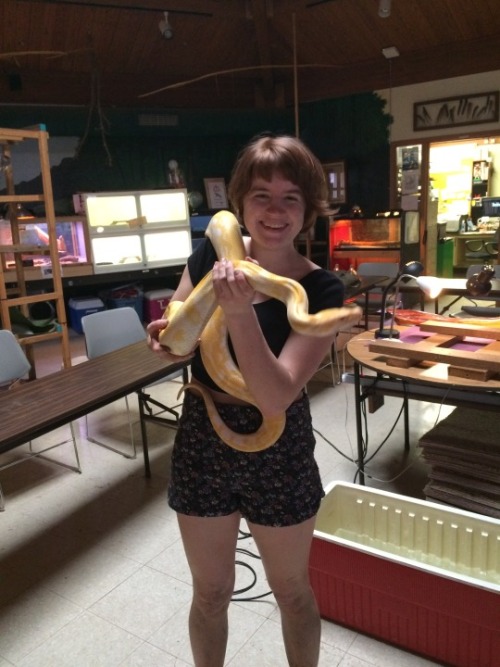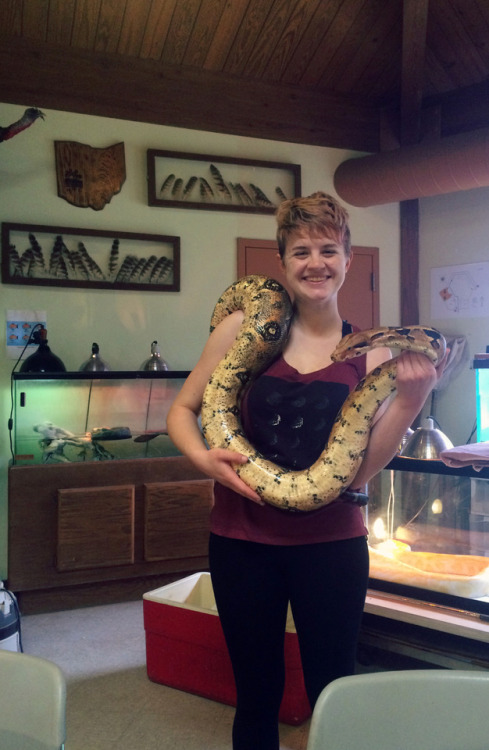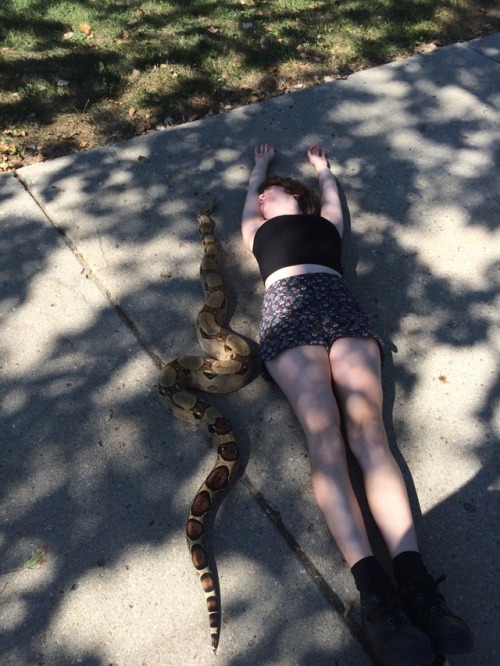xenondifluoridecb:vampireapologist:the-confused-indian:vampireapologist:Here are some snakes I’ve me
xenondifluoridecb:vampireapologist:the-confused-indian:vampireapologist:Here are some snakes I’ve met! a note: the eastern garter snake biting me was only doing so because I picked it up. it musked me first as a warning (released a terrible smell), and finally resorted to biting when I didn’t let it go. Musking is usually a first-defense, and biting is a last resort. Think of it like this: if you’re trying to escape, latching on with your mouth is counter-productive. Ohio snakes are generally less-than-aggressive, and if you don’t bother them, they won’t bother you! I just have a habit of bothering them; it’s in the job description.How can I know if a snake is venomous or not before picking it up?Is the top left one poisonous? It’s with a bright color.Bright colors don’t indicate venom in snakes and are not a reliable way to identify whether or not a snake is venemous. Snakes come in a variety of colors, like the northern ring-necked snake top-left, and in fact Ohio’s three venomous snakes (eastern copperhead, timber rattlesnake, eastern Eastern massasauga) look comparatively dull!One way to recognize a venomous snake in Ohio is by the shape of their heads.Venomous snakes often have more “triangular” heads than non-venomous snakes (x).However, the only absolute way to make sure you’re not picking up a venomous snake is to know specific species; if you can properly identify Ohio’s three venomous snakes, you’ll know whether or not you’re about to handle one.Really, my advice is, if you cannot identify a snake you find, don’t pick it up; it’s not worth the risk. What’s more, even if a snake is non-venomous, you need to make sure your tetanus shot is up to date if you get bitten! Venom isn’t the only risk.Ohio snakes are generally nonagressive, and both the timber rattlesnake and the eastern massasauga are extremely endangeredl you’re not likely to run into any.My advice is, leave snakes alone! If you think a non-venmous is in danger, you don’t have to pick it up; often if you poke gently at them with a stick, they’ll make a “run” for it!Finally, you’ll never see a photo of me handling a venomous snake with my hands! Nobody should do that! The proper tool is a snake hook, and you should never attempt it without training!That’s a copperhead! Thanks for the question!Unfortunately the head shape is not a good indicator of venomous or not when it comes to Australian species of snake. An excellent example of this is the Eastern Brown snake which is the most dangerous snake in Australia (see: Australian Geographic) and the 5th most venomous in the world (see: top 25 most venomous snakes of the world). As you can see in this picture, the Eastern Brown Snake has a more rounded head, unlike the the more triangular head of venomous snakes in Ohio. This can also be seen in the Inland Taipan, the 2nd most venomous snake in the world (see top 25 most venomous snakes of the world):Yup! What is comes down to ultimately, like I said, is to not touch a snake you can’t identify. And really, don’t touch them at all if you can avoid them! -- source link
#snake#snake bite





